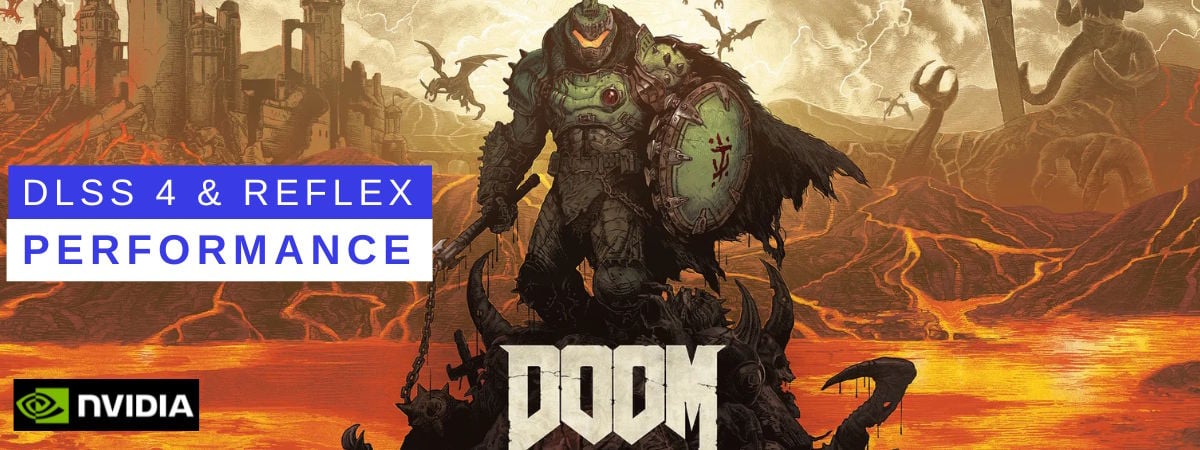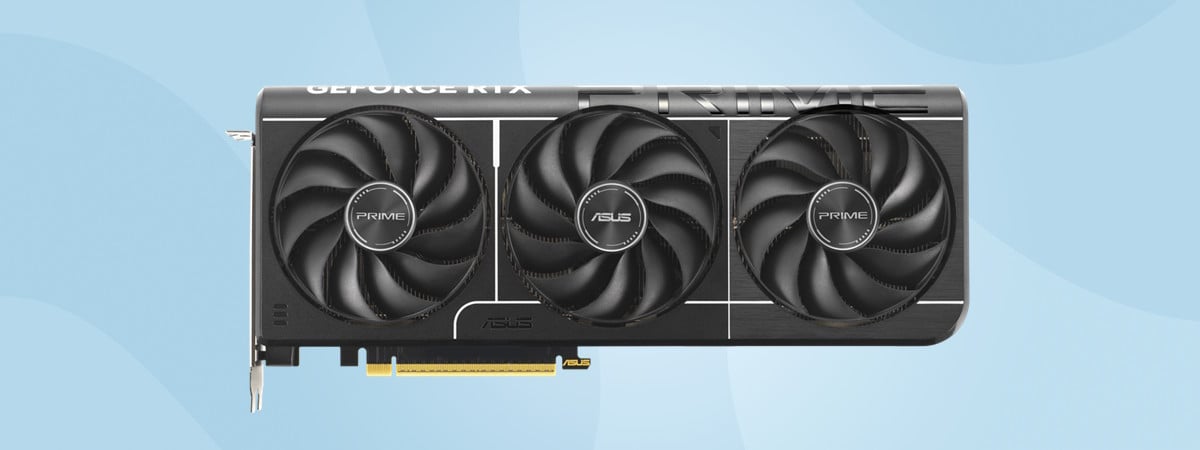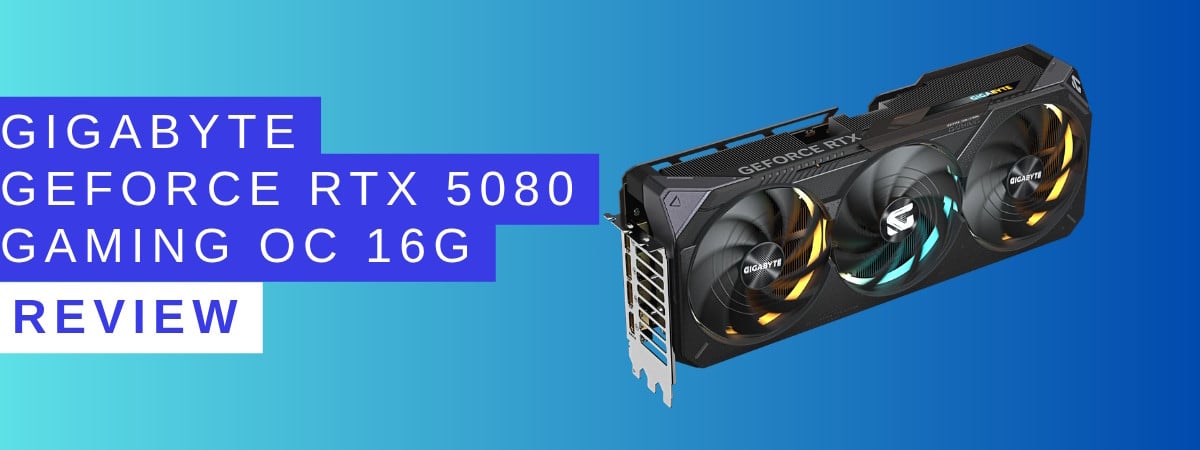
Dune: Awakening is one of those games that stirred my curiosity. It’s a survival massively multiplayer online game (MMO) with a cinematic twist, which throws you into the unforgiving deserts of Arrakis and asks you to build, fight, and survive in a world where even the sand wants to kill you. Naturally, I wanted to see how it performs on modern hardware, and more specifically, on the ASUS ROG Strix GeForce RTX 5070 Ti that I had in testing. I spent the last couple of days doing that, and the mix of wide open spaces, the huge draw distances, and detailed character interactions made this a perfect test for my gaming rig. Here’s what Dune: Awakening feels like to play and how the GeForce RTX 5070 Ti handles the spice-filled chaos:
Meet the ASUS ROG Strix GeForce RTX 5070 Ti and my PC setup for Dune: Awakening
For this test, I used the same system that’s powered many of my reviews lately. It’s fast, stable, and ideal for GPU-heavy games like this one:
- Motherboard: ASUS ProArt X870E-CREATOR WIFI
- Processor: AMD Ryzen 9 9900X
- Cooler: Cooler Master MasterLiquid ML360R RGB
- Memory: Kingston FURY Renegade DDR5-8000 32GB
- Storage: Kingston FURY Renegade G5 SSD (4TB)
- Power supply: Seasonic Focus GX-1000
- Monitor: ASUS ROG Strix XG32UQ 4K 165Hz
At the center of it all is the ASUS ROG Strix GeForce RTX 5070 Ti, an excellent graphics card for high-resolution gaming. It comes with 16 GB of GDDR7 VRAM and support for DLSS 4 and Reflex, which is exactly what you need for an always-online, visually demanding game.

The ASUS ROG Strix GeForce RTX 5070 Ti 16GB GDDR7 is a massive graphics card
The triple-fan cooling system on this graphics card kept the temperatures in check even after hours of gameplay. And it did well even if the ambient temperature these days went past 35℃ (95℉).

Specs of the ASUS ROG Strix GeForce RTX 5070 Ti 16GB GDDR7
The RGB lighting and bold design are a bonus, but what really matters is how smoothly it runs a game where weather systems, day-night cycles, and dynamic shadows all hit your GPU constantly.
Survival on Arrakis, or what Dune: Awakening feels like to play
You begin Dune: Awakening as a nobody, dropped in the desert with barely enough water to stay alive. There’s no chosen one here. It’s just you, without even a stillsuit. Enough to make you slowly realize that the sand isn’t just a pretty texture. More like the main character of the game…

You start as a nobody, alone, in the desert of Arrakis
The desert is deadly. You’re dodging sandstorms, looking for shade, and watching the ground for tremors in order to avoid being eaten by a colossal sandworm that is about to get out from beneath, a creature so huge that it makes even Godzilla look modest.

Sandworms are incredibly huge!
The game blends survival mechanics with RPG and MMO elements. You build bases, gather spice, craft gear, and engage in faction-based PvP. The visuals are beautiful: giant dunes, atmospheric lighting, detailed character models, and fluid animations for everything from sand-blasted fights to ornithopter flights.

Spice, ornithopters, base building, combat - this game has it all
In terms of performance, the game pushes your system more than I expected. Large draw distances, animated particle effects from storms, and combat situations keep your GPU busy at all times. Luckily, DLSS 4 and Reflex help a lot here.

Ever seen a Muad'Dib this big?
I spent most of my time using DLSS 4 in Balanced mode with Frame Generation turned on. These settings delivered excellent performance even in the most demanding of situations. Image quality remained high, and latency was low enough to make combat encounters feel responsive. However, to back all that up with some numbers, I also ran a series of benchmarks. Here are their results:
Dune: Awakening performance on the ASUS ROG Strix GeForce RTX 5070 Ti
Now for the performance part: I tested Dune: Awakening using the Ultra graphics preset at 1080p, 1440p, and 4K resolutions. In each resolution, I measured performance with native rendering as well as with DLSS 4 in Balanced mode, and also with Frame Generation turned on. I also measured latency with NVIDIA Reflex enabled and disabled. Here’s how the ASUS ROG Strix GeForce RTX 5070 Ti performed:
1080p benchmark results
At Full HD, the game already looks great and runs well even without DLSS. I recorded an average of 115 fps with native rendering. Switching to DLSS 4 Balanced increased performance to 160 fps, which is a 39% improvement. With Frame Generation (2X) also enabled, the framerate jumped to 251 fps, marking a 118% uplift compared to native rendering.

DLSS 4 performance at 1080p
In terms of latency, Reflex helped a lot. With it turned off, latency sat at 33 ms. Turning it on reduced that to 26 ms, and Reflex Boost dropped it further to 21 ms, which is a 36% reduction overall. That kind of drop is noticeable in late-game PvP (player versus player) encounters and instant reactions.

Reflex performance at 1080p
TIP: If you have an older NVIDIA graphics card, you may find this interesting: DLSS 3.5 vs. FSR 3: Which one gets you more performance?
1440p benchmark results
Moving to the 1440p resolution, native rendering gave me an average of 83 fps. Enabling DLSS 4 Balanced raised it to 135 fps, a 63% boost. Turning on Frame Generation pushed the framerate even higher to 199 fps, meaning a 139% improvement compared to native rendering.

DLSS 4 performance at 1440p
Latency without Reflex was 46 ms. Enabling it brought it down to 39 ms, and Reflex Boost trimmed it slightly to 36 ms, for a total latency drop of 22%. The game remained smooth and highly responsive even during battles or while navigating busy locations.

Reflex performance at 1440p
4K benchmark results
In 4K resolution, Dune: Awakening becomes quite demanding. The GeForce RTX 5070 Ti averaged 46 fps with native rendering. Using DLSS 4 Balanced, performance nearly doubled to 90 fps, a 96% increase. With Frame Generation added, it climbed to 123 fps, giving a total 167% boost over native.

DLSS 4 performance at 4K
System latency at 4K without Reflex was 71 ms, which felt a bit sluggish. Enabling Reflex dropped that to 55 ms, and Reflex Boost cut it further to 42 ms, resulting in a significant 41% reduction. That made the game much more playable at high resolution, especially in hectic moments where input lag could have been a problem.

Reflex performance at 4K
The ASUS ROG Strix RTX 5070 Ti handled Dune: Awakening impressively well, especially with DLSS 4 and Frame Generation enabled. At every resolution, performance and responsiveness improved dramatically, making the game smooth and enjoyable even at 4K.
So, is the GeForce RTX 5070 Ti ready for Arrakis?
Dune: Awakening feels like a rich and brutal experience. The massive landscapes and survival tension create something unique in the MMO space. It’s not your typical action RPG, demanding situational awareness, exploration, and resource management, all at once. The ASUS ROG Strix GeForce RTX 5070 Ti handles the game very well. Whether you’re playing at 1440p or going all in at 4K, DLSS 4 and Frame Generation keep things fast and smooth. Reflex is also a big help, especially later on in the game when you get into PvP warfare. If you plan on playing Dune: Awakening with all the visual bells and whistles, the GeForce RTX 5070 Ti is more than capable. Just make sure to bring water on your trip through the sands. I’m curious: what GPU are you using to explore Arrakis? Let me know in the comments. Or if you’re just starting the game, what’s your plan: Play solo? Join or create a guild? Hunt spice? Fight worms?



 29.07.2025
29.07.2025 


